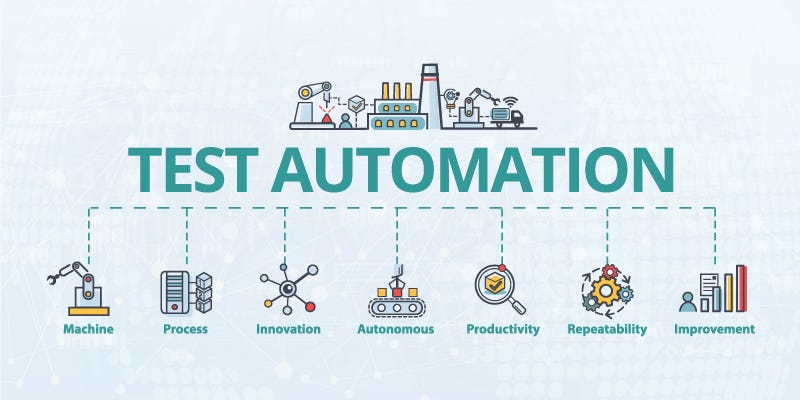Reliable Automation Testing: Enhancing Software Integrity and Speed
Reliable Automation Testing: Enhancing Software Integrity and Speed
Blog Article
From Manual to Automated Screening: A Comprehensive Overview to Transitioning Efficiently and Efficiently
In the realm of software application screening, the change from handbook to automated processes has ended up being a progressively crucial transition for organizations looking for to improve efficiency and accuracy in their testing techniques. The journey from handbook to automated screening is not without its challenges, however when approached tactically and with a clear plan in mind, the benefits can be substantial.
Benefits of Automated Examining
Automated testing uses various benefits, boosting effectiveness and accuracy in software application development procedures. Automated examinations can be run concurrently on several tools and operating systems, significantly speeding up the testing phase contrasted to hand-operated screening.
In addition, automated testing ensures a greater degree of precision in identifying issues. Given that automated examinations follow predefined scripts, human mistake is minimized, resulting in even more reputable test outcomes. Uniformity in testing is likewise boosted, as automated examinations implement the exact same actions precisely each time they are run. This uniformity is important in making certain that all functionalities of the software application are thoroughly checked, minimizing the possibility of undetected bugs slipping with to production.
Choosing the Right Devices

First of all, evaluate your needs and purposes. Comprehend the scope of your project, the technologies included, and the capability of your team. This evaluation will assist you identify the features and capacities you call for in your screening tools.
Secondly, consider the compatibility of the tools with your existing processes and systems. Seamless assimilation with your current software application growth lifecycle is necessary to make sure a smooth change to automation.
Additionally, examine the scalability and versatility of the tools. As your screening needs advance, the tools need to be able to adapt and suit modifications properly.
Finally, variable in the support and area around the tools. When applying automated screening, durable support and an energetic individual area can offer beneficial resources and support. By very carefully thinking about these aspects, you can choose the right devices that straighten with your requirements and set the stage for an effective transition to automated testing.
Writing Efficient Examination Manuscripts

When crafting test scripts, it is vital to think about the particular demands of the software being examined and ensure that the scripts attend to all important performances. Clear and detailed calling conventions for examination scripts and test instances can improve readability and maintainability. Additionally, integrating mistake handling devices within the test scripts can assist in identifying and resolving problems without delay.
Moreover, organizing examination scripts right into modular elements can boost reusability and scalability, decreasing redundancy and boosting efficiency in examination script upkeep. Regular evaluations and updates to check scripts are essential to maintain pace with advancing software application requirements and functionalities. By following these concepts, testers can develop durable and effective examination scripts that contribute dramatically to the success of automated testing procedures.
Integrating Automation Into Workflows
By flawlessly incorporating automated testing devices like Selenium or Appium right into the software application growth lifecycle, teams can accomplish faster comments on code changes, click to find out more leading to quicker bug discovery and resolution. This combination permits for continual testing throughout the growth procedure, making sure that any problems are determined early on, resulting in higher software program quality. Correct assimilation of automation tools requires collaboration between development, testing, and operations teams to develop a unified process that optimizes efficiency and performance in supplying top notch software application products.
Guaranteeing a Smooth Change
Successfully transitioning to automated screening involves meticulous planning and cautious implementation to minimize interruptions and optimize effectiveness in the software view application development process - automation testing. To guarantee a smooth change, it is vital to begin by performing a comprehensive evaluation of the present testing procedures and recognizing locations where automation can bring one of the most considerable benefits. Involving with all stakeholders early at the same time, including programmers, testers, and project supervisors, is essential for gathering support and buy-in for the automation campaign
Interaction is essential during this shift phase. Clear communication of the goals, benefits, and assumptions of automated testing assists to handle any kind of resistance or problems that might arise. Additionally, supplying sufficient training and sources for staff member to upskill in automation devices and techniques is essential for making certain an effective shift.

Conclusion
In final thought, transitioning from manual to automated screening offers many benefits, consisting of boosted performance and integrity. By picking the ideal tools, writing effective test manuscripts, and incorporating automation flawlessly into operations, organizations can guarantee a smooth and successful change. It is necessary to accept automation as an important asset in software screening procedures to boost general quality and performance.
In the world of software testing, the change from guidebook to automated processes has actually ended up being a progressively essential transition for organizations seeking to enhance effectiveness and accuracy in their testing methods. Automated tests can be run all at once on several gadgets and operating systems, considerably speeding up the screening stage compared to manual screening. Consistency in screening is also boosted, as automated examinations execute the exact same steps specifically each time they are run.To make sure the effective application of chosen screening tools, the development of effective test scripts plays an important role in confirming the capability and performance of automated processes - automation testing. By following these concepts, testers can develop effective and robust examination manuscripts that contribute substantially to the success of automated screening processes
Report this page